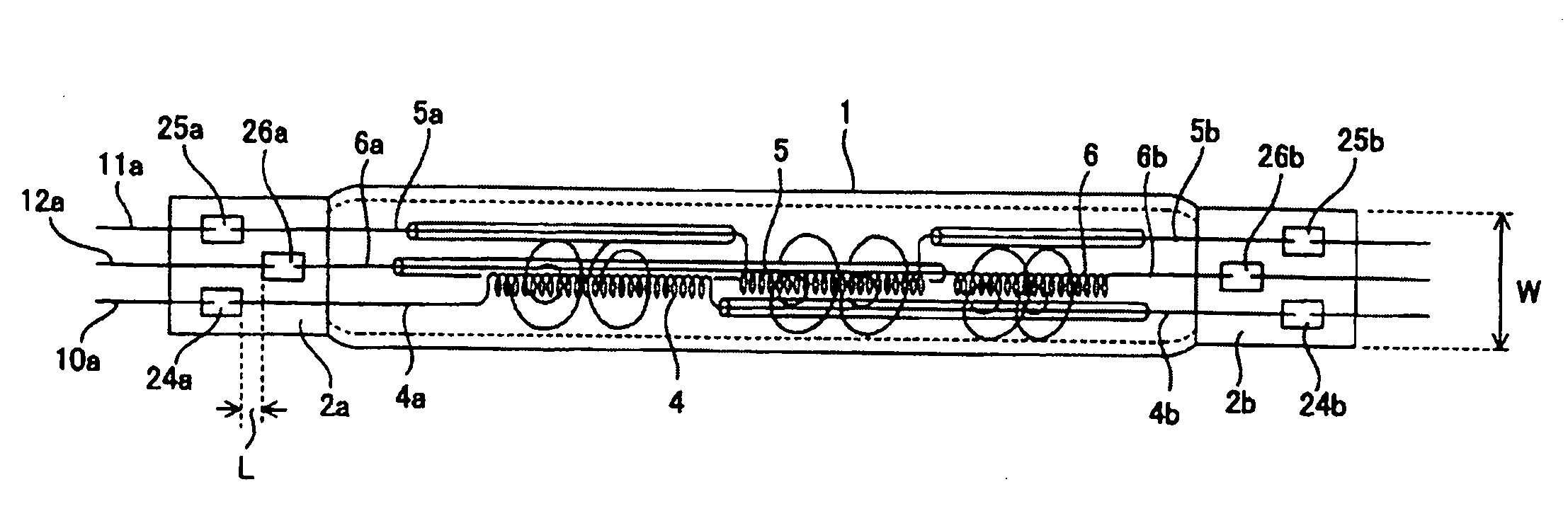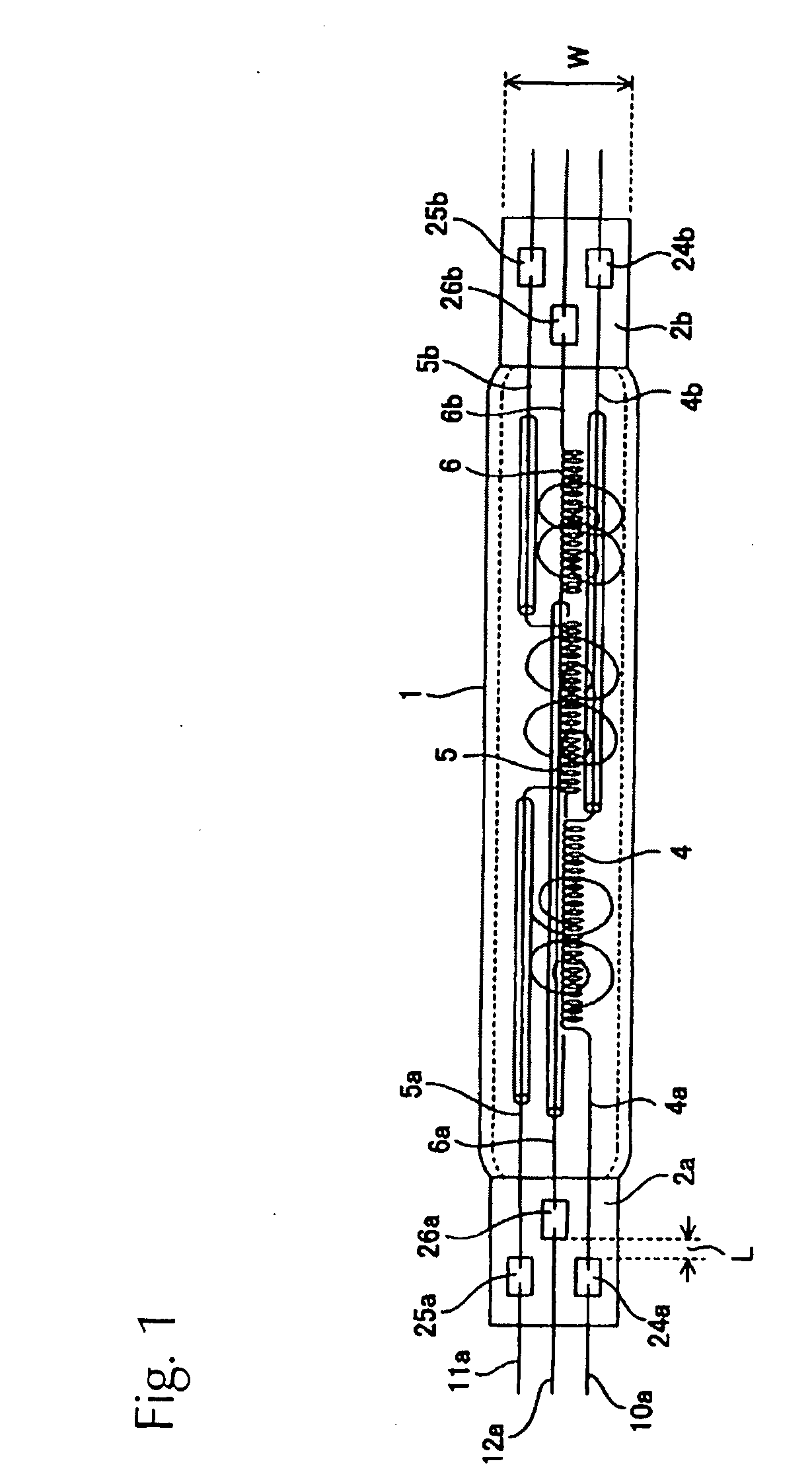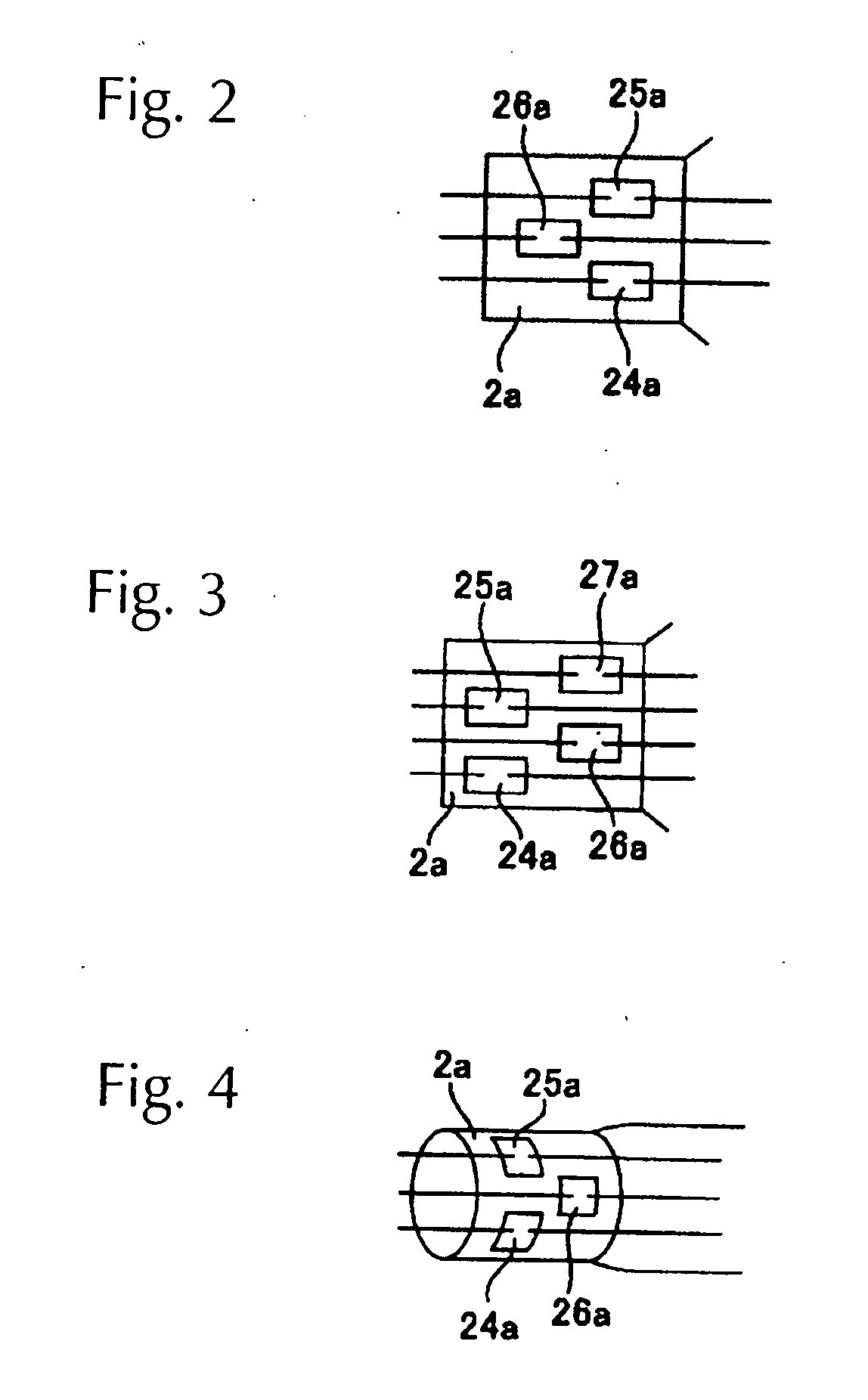Filament lamp
- Summary
- Abstract
- Description
- Claims
- Application Information
AI Technical Summary
Benefits of technology
Problems solved by technology
Method used
Image
Examples
Embodiment Construction
[0024]Taking note of the problems with the conventional technology described above, the present invention seeks to provide a filament lamp in which the width direction dimension of the hermetically sealed parts does not increase, even if the number of filaments, or in other words, the number of metal foil sheets, increases.
[0025]The present invention is characterized by having a plurality of coil-shaped filaments disposed together in sequence in the tube axis direction of a light-emitting tube respectively in the interior of a light-emitting tube having hermetically sealed parts formed at the ends, with a pair of internal leads connected to the ends of each filament and the internal leads being electrically connected to external leads respectively via a plurality of sheets of metal foil; wherein some of the plurality of sheets of metal foil are disposed in staggered relation to the tube axis direction of the light-emitting tube to form a gap at the edges of the metal foil with respe...
PUM
 Login to view more
Login to view more Abstract
Description
Claims
Application Information
 Login to view more
Login to view more - R&D Engineer
- R&D Manager
- IP Professional
- Industry Leading Data Capabilities
- Powerful AI technology
- Patent DNA Extraction
Browse by: Latest US Patents, China's latest patents, Technical Efficacy Thesaurus, Application Domain, Technology Topic.
© 2024 PatSnap. All rights reserved.Legal|Privacy policy|Modern Slavery Act Transparency Statement|Sitemap



